Aberrant excitatory neuronal activity and compensatory remodeling of inhibitory hippocampal circuits in mouse models of Alzheimer's disease
- PMID: 17785178
- PMCID: PMC8055171
- DOI: 10.1016/j.neuron.2007.07.025
Aberrant excitatory neuronal activity and compensatory remodeling of inhibitory hippocampal circuits in mouse models of Alzheimer's disease
Abstract
Neural network dysfunction may play an important role in Alzheimer's disease (AD). Neuronal circuits vulnerable to AD are also affected in human amyloid precursor protein (hAPP) transgenic mice. hAPP mice with high levels of amyloid-beta peptides in the brain develop AD-like abnormalities, including cognitive deficits and depletions of calcium-related proteins in the dentate gyrus, a region critically involved in learning and memory. Here, we report that hAPP mice have spontaneous nonconvulsive seizure activity in cortical and hippocampal networks, which is associated with GABAergic sprouting, enhanced synaptic inhibition, and synaptic plasticity deficits in the dentate gyrus. Many Abeta-induced neuronal alterations could be simulated in nontransgenic mice by excitotoxin challenge and prevented in hAPP mice by blocking overexcitation. Aberrant increases in network excitability and compensatory inhibitory mechanisms in the hippocampus may contribute to Abeta-induced neurological deficits in hAPP mice and, possibly, also in humans with AD.
Figures
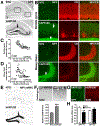
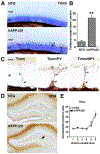

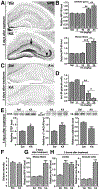
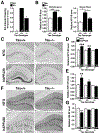
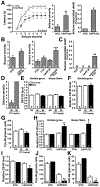

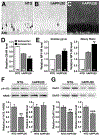

Comment in
-
Does epileptiform activity contribute to cognitive impairment in Alzheimer's disease?Neuron. 2007 Sep 6;55(5):677-8. doi: 10.1016/j.neuron.2007.08.014. Neuron. 2007. PMID: 17785172
References
-
- Almeida CG, Tampellini D, Takahashi RH, Greengard P, Lin MT, Snyder EM, and Gouras GK (2005). β-amyloid accumulation in APP mutant neurons reduces PSD-95 and GluR1 in synapses. Neurobiol Dis 20, 187–198. - PubMed
-
- Amatniek JC, Hauser WA, DelCastillo-Castaneda C, Jacobs DM, Marder K, Bell K, Albert M, Brandt J, and Stern Y (2006). Incidence and predictors of seizures in patients with Alzheimer’s disease. Epilepsia 47, 867–872. - PubMed
-
- Bijak M (1995). Inhibitory effect of neuropeptide y on epileptiform activity in the frontal cortex and hippocampus in vitro. Pol J Pharmacol 47, 461–463. - PubMed
Publication types
MeSH terms
Substances
Grants and funding
- P50 AG023501/AG/NIA NIH HHS/United States
- NS29709/NS/NINDS NIH HHS/United States
- R01 AG011385/AG/NIA NIH HHS/United States
- NS041787/NS/NINDS NIH HHS/United States
- R01 NS039074/NS/NINDS NIH HHS/United States
- RR018928/RR/NCRR NIH HHS/United States
- P30 HD024064/HD/NICHD NIH HHS/United States
- AG011385/AG/NIA NIH HHS/United States
- AG022074/AG/NIA NIH HHS/United States
- AG023501/AG/NIA NIH HHS/United States
- R01 NS029709/NS/NINDS NIH HHS/United States
- NS39074/NS/NINDS NIH HHS/United States
- HD024064/HD/NICHD NIH HHS/United States
- R01 NS041787/NS/NINDS NIH HHS/United States
- P01 AG022074/AG/NIA NIH HHS/United States
- K08 NS054811/NS/NINDS NIH HHS/United States
- R37 AG011385/AG/NIA NIH HHS/United States
- C06 RR018928/RR/NCRR NIH HHS/United States
- NS54811/NS/NINDS NIH HHS/United States
LinkOut - more resources
Full Text Sources
Other Literature Sources
Medical
Molecular Biology Databases

